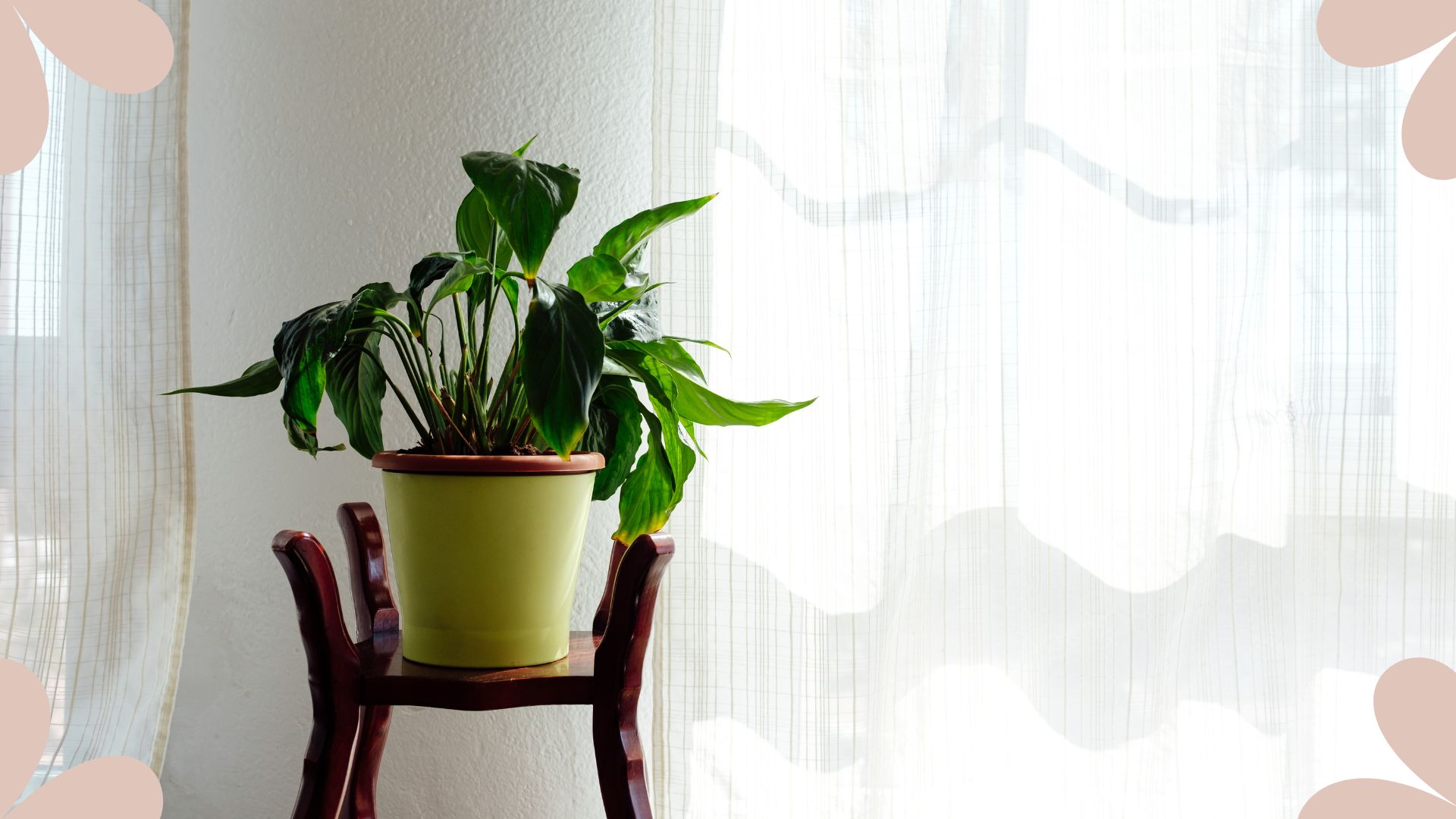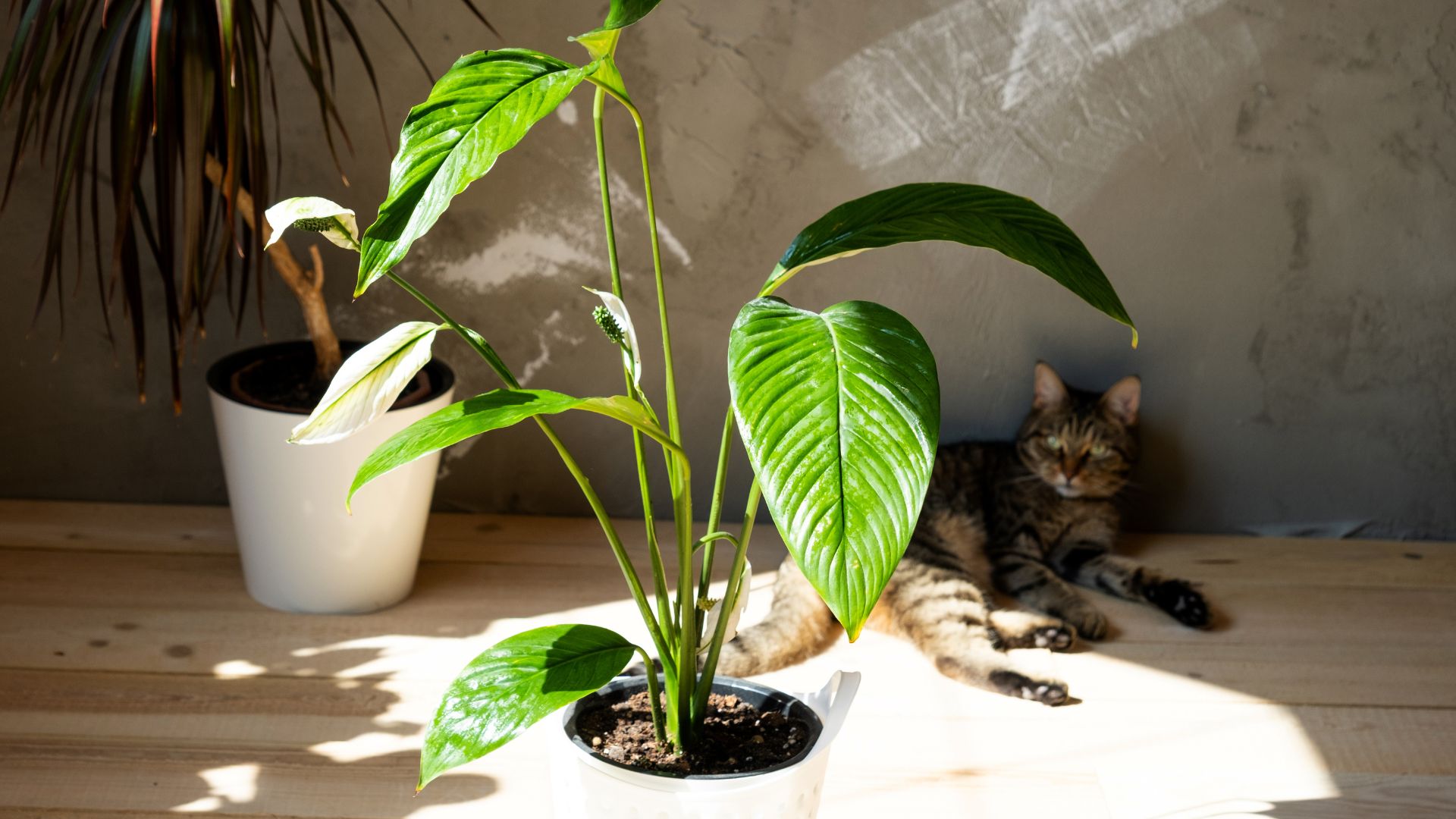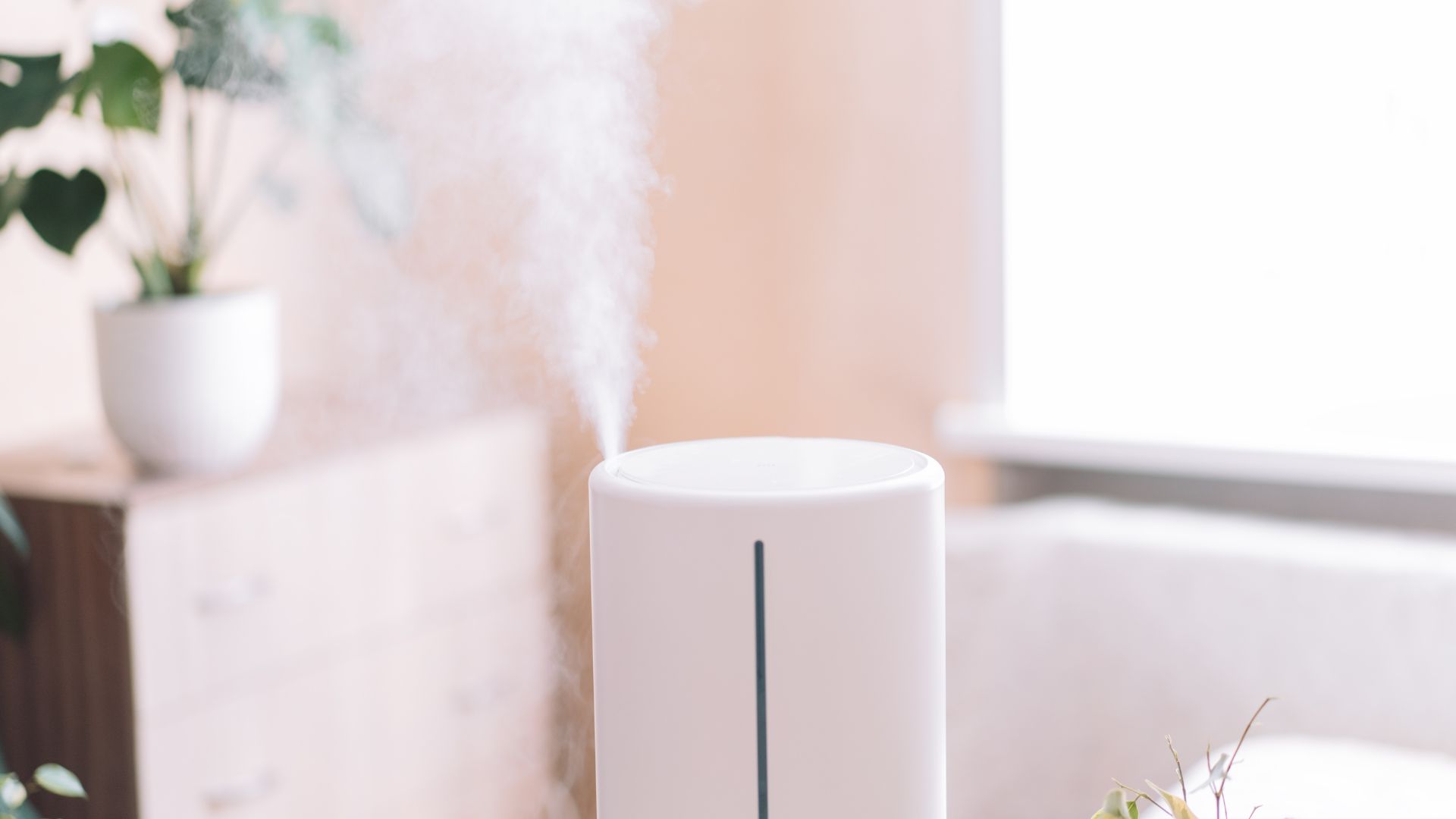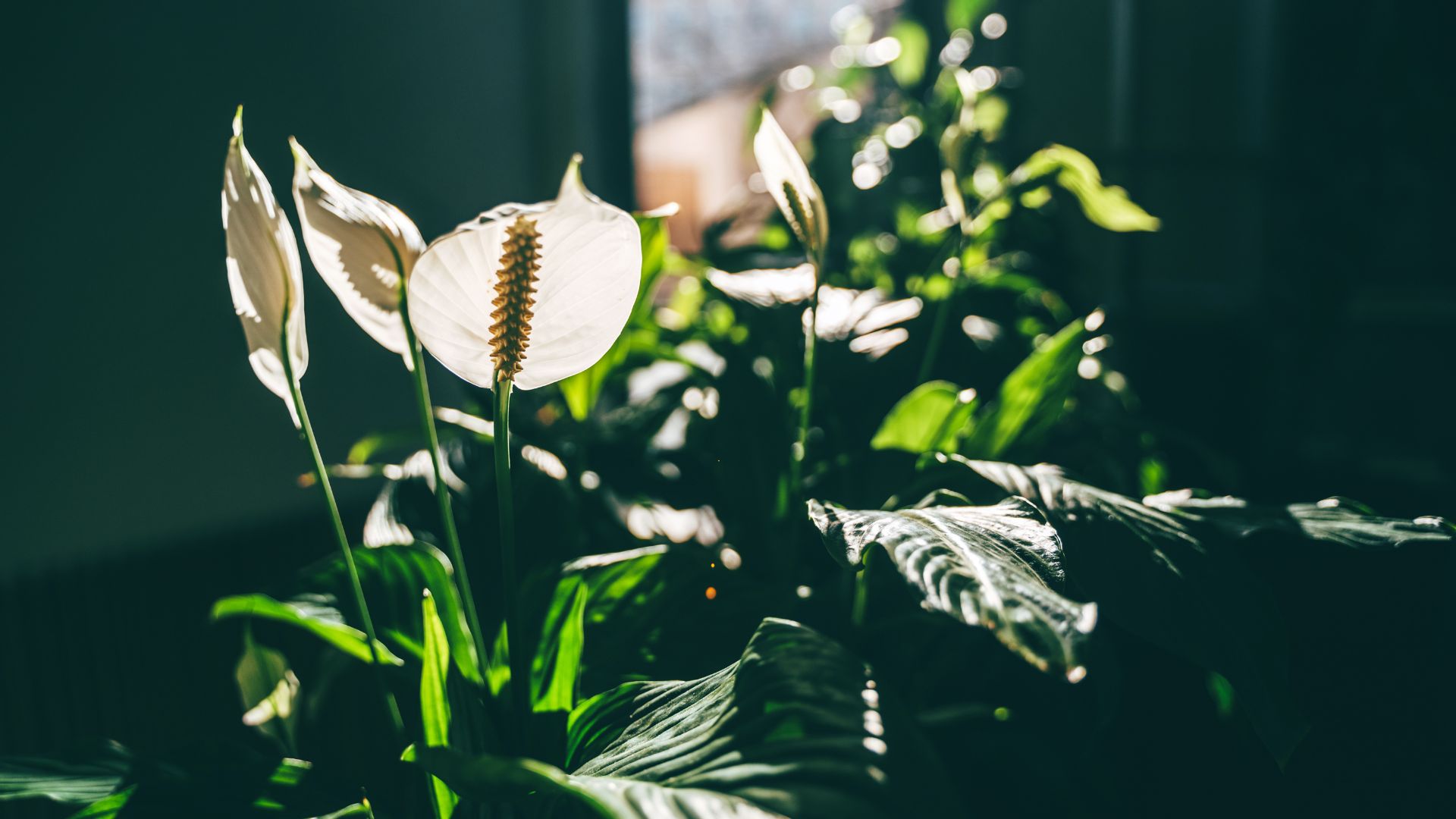
Are you starting to wonder why your peace lily isn't flowering yet? Whilst it can be frustrating there are several reasons why it might not be growing to its full potential yet and most of them are easily fixed.
When it comes to how to care for a peace lily, it's usually a pretty straightforward maintenance plan and more often than not they can be left to their own devices. However now and then you'll need to find an answer to why your peace lily leaves drooping or in this case, a lack of flowering.
Realising this is a common issue, we spoke to plant experts to get all the info on why peace lilies don't flower and what you can do about it.
Why isn't my peace lily flowering?
Whilst peace lilies are arguably one of the easiest houseplants to keep alive, there will be some instances where they stop thriving and show signs of struggle.
Your peace lily not flowering may be frustrating but it's no real cause for concern, as there are very fixable reasons why flowers aren't growing.
1. Insufficient light

Similar to why a houseplant can grow mould on its topsoil, a lack of light on your peace lily can mean it doesn't flower.
Andrew White, gardening expert at Rhino Greenhouses Direct, says, "One of the main causes for peace lilies not flowering is actually overwatering, as you'll find they are quite a temperamental plant when it comes to consistently flowering."
She also says that they need to have very specific levels of exposure to light, so be sure to try your peace lily in several different levels of light around your home or garden to find the right spot.
2. Incorrect watering measures
Whether it's overwatering or underwatering not knowing how often you should water your indoor plants can lead to their eventual demise. Less dramatic, it can stunt their growth and be the reason for a lack of flowering.
Fiona Jenkins, the professional gardener at MyJobQuote, explains, "Overwatering or underwatering is another potential issue. Peace lilies don't like soggy soil.
Overwatering can stress the plant and hinder flowering. The key is to water them only when the top couple of inches of soil feels dry."
Peace lilies don't like constantly wet soil but it's also not good to let them dry out completely, your peace lily leaves turning yellow is a sign of underwatering and a tell that you need to water the plant thoroughly.
3. Cool environment

One of the most common houseplant mistakes is keeping your plant in an environment that will do nothing but damage it. Peace lilies thrive in a warmer temperature, between 18-30°C.
"If your home is constantly cool, it might affect flowering. Dry air can stress the plant and discourage flowering," explains Fiona. "Increase humidity around your peace lily using a pebble tray filled with water or with a humidifier."
This doesn't mean you have to say goodbye to your best dehumidifier, simply move the machine or the plant to a different area.
4. Lack of nutrients
There's a lot more to consider when caring for a plant than watering and sunlight exposure, plants also need to get nutrients from their soil.
Explaining how you should feed your peace lily a balanced houseplant fertiliser, Fiona says you need to aim to do this every two to three months during the spring and summer growing season.
It's also important you know when to repot your plants, Fiona explains, "If your peace lily is rootbound in a pot that's too small, it might not flower. Consider repotting the plant into a slightly bigger pot with fresh potting mix."
FAQs
How can I get my peace lily to flower?
The best way to ensure your peace lily flowers when they should is to remedy all of the problem points mentioned above and ensure your plant has an adequate amount of water, light, nutrients and humidity.
Fionas stresses the following conditions, "Avoid any harsh direct sunlight, as this may scorch the leaves. A north or east-facing window is ideal. If your plant is in a shady spot, consider moving it or supplementing it with grow lights. And pay attention to your plant. Drooping leaves might indicate underwatering while yellowing leaves could be a sign of overwatering or lack of light. Adjust your care routine accordingly."
It's also important to know how to clean plant leaves as this will allow your peace lily to absorb more life which can aid in flower production. Alongside this, Fiona recommends using a phosphorus-rich fertiliser which is specifically formulated for blooming plants. However, she does warn you to read the instructions to not overdo it.

How often do peace lilies flower?
For a plant that doesn't flower very often, peace lilies are some of the best indoor plants for your health and well-being. There is a common time from when you can expect your peace lily to flower, only if its needs are met of course.
"Peace lilies, under ideal conditions, have the potential to flower multiple times a year. With optimal care and consistent growing conditions, healthy, peace lilies can produce flowers two to three times a year. These flowers typically last for 4-6 weeks each," says Fiona.
It is, however, important to note that younger peace lilies can take over a year or two to mature before they start flowering. Fiona suggests being patient with your plant, especially if it's a new plant.
Although peace lilies aren't exactly the hardest plants to keep alive, there are some easy mistakes to make when it comes to their care. The easiest way to keep your plants happy is to make sure you're regularly doing health checks and that their environment isn't causing any damage.







